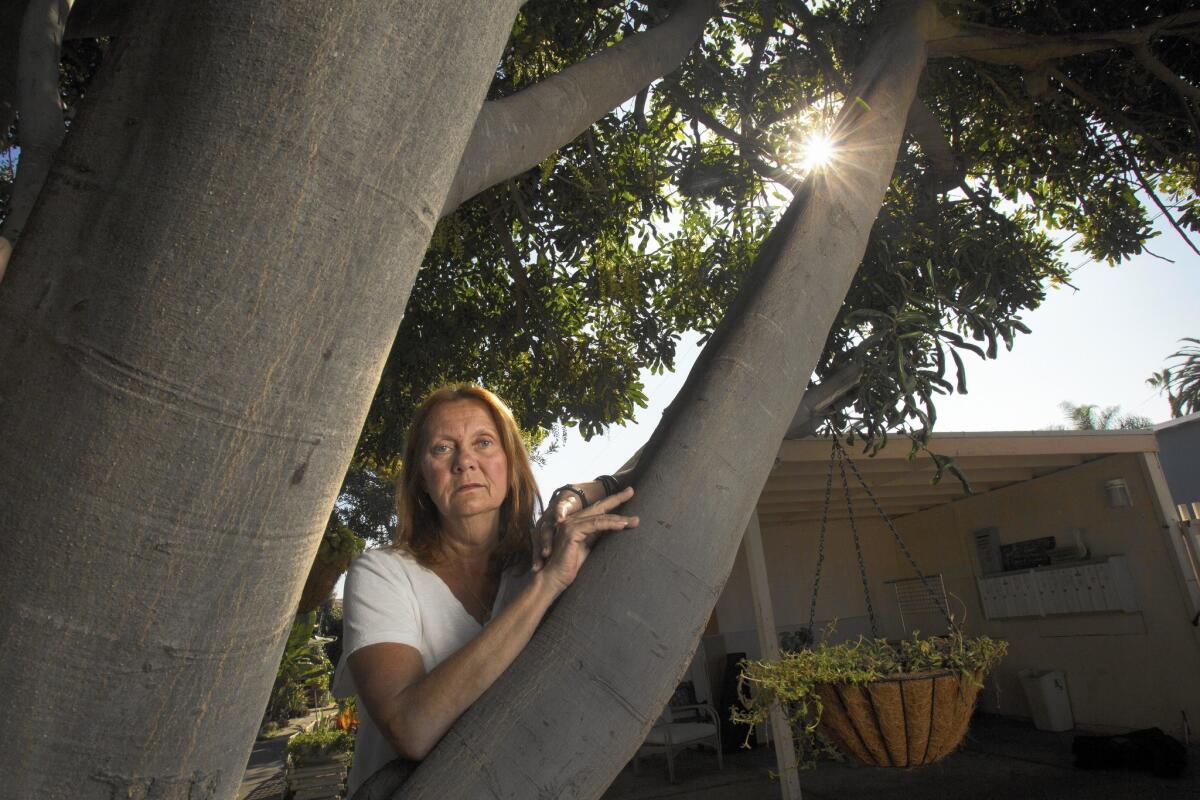Clinical trial seeks answers to sudden deaths of healthy young people

- Share via
Jason Lappies woke in his San Diego apartment on the morning of June 26. Not needing to report to work right away, he settled onto his couch to watch a World Cup soccer match. He teased his roommate, who had to rush off to a job.
When the friend returned later in the day, Lappies, 31, was still on the couch, positioned exactly as he had been in the morning.
He had died, mysteriously and unexpectedly.
An autopsy left as many questions as it answered. The medical examiner thought Lappies’ death probably stemmed from cardiac arrhythmia — an irregular heartbeat — but couldn’t determine the underlying cause.
Lappies, an all-star lacrosse player in college, had not been using drugs and didn’t suffer from heart disease. He had been planning to leave soon for a repeat stint teaching English in South Korea, a job he adored.
“No health issues, phenomenal athlete, traveled globally — just as healthy as can be,” said his mother, Mary Lappies, of Oceanside.
Sudden deaths such as Jason Lappies’ often go unexplained because standard autopsies cannot detect arrhythmias that cause the heart to stop in otherwise healthy young people. But a new clinical trial to be announced Wednesday by the Scripps Translational Science Institute may someday provide answers for San Diego County residents and eventually others across California.
By performing “molecular autopsies” — taking tissue samples from sudden-death victims over coming months and sequencing their DNA — the county medical examiner and area researchers hope to ferret out the root cause when a young person dies inexplicably.
Jason Lappies’ death is one of five being examined with the permission of family members. The hope is to study 100 deaths over the next three years.
“Someday, the reason why people die suddenly will not be a mystery,” said Dr. Eric Topol, director of the Scripps institute in La Jolla, which is heading up the Molecular Autopsy Study. Genomics “can jump in and fill a big hole here.”
Nearly 400,000 cardiac arrests occur out of hospitals in the U.S. each year, according to the American Heart Assn.
The number of those that are “youthful sudden deaths” — occurring before middle age and before coronary artery disease is more likely to be a trigger — is unclear but believed to be 1,000 to 5,000, said Dr. Michael Ackerman, director of the Mayo Clinic Windland Smith Rice Sudden Death Genomics Laboratory in Rochester, Minn., and an early proponent of the molecular autopsy approach.
San Diego County has a dozen or more such sudden unexplained deaths in young people each year, according to the medical examiner, whose office is responsible for investigating the cause and manner of death in mysterious cases, as well as homicides, suicides and accidents. Last year, it conducted 1,955 autopsies.
The typical autopsy includes external and internal exams, during which a pathologist examines the body for injury or signs of disease, and tests blood and tissue to rule out drug use or infection.
In many cases, the cause is obvious: a gunshot wound, a blood clot, a drug overdose. But sometimes, answers are elusive.
“We’re left with this handful of people whose cause of death is beyond the current abilities of the autopsy to find,” said Dr. Jonathan Lucas, chief deputy medical examiner for the county. “The individual was healthy yesterday and is dead today, and we don’t know why.”
That is where the molecular autopsy approach would come in, Topol said.
Working off a daily report from the medical examiner, Scripps researchers identify unexplained deaths occurring in people ages 45 or younger who do not have histories of substance abuse, obesity or heart disease and other serious illnesses.
Using a process called whole exome sequencing to analyze DNA from blood and heart tissue samples, the team looks for certain genetic variations known to be associated with heart problems. The analysis also helps build a data repository that could help reveal new genetic variants associated with disease, Topol said.
The researchers will also analyze DNA found in the saliva of two relatives (the parents of the deceased, ideally) to help home in on key genes. Topol said he expected some of the investigations would reveal genetic variants that could be “strong candidates” to explain what happened, while others would remain difficult to interpret.
Ackerman, whose laboratory has performed more than 250 postmortem genetic analyses on victims of sudden death from around the country, including 50 to 100 whole exome studies like the ones conducted by Scripps, cautioned that interpreting the results of DNA sequencing can be tricky. Often, he said, results are written in “shades of gray,” pointing to genetic variants that might or might not be implicated in the death.
“You have to be a serious, serious detective and be skeptical and turn over every stone,” he said. “The worst thing you can do is tell the person who’s left behind that you found it when you haven’t.”
Genome sequencing in medical examiners’ offices is not widespread, he said, in part because many don’t have proper facilities or procedures in place to archive tissues for DNA analysis.
Expense is an issue too. Although the price of sequencing is falling rapidly, Topol said it can take $4,000 to $5,000 to sequence subjects and their family members. For the San Diego effort, that cost is shouldered by Scripps, not by the county.
“We don’t have the budget to do a $1,000 test on everyone who could benefit from it — gosh, I wish we could,” said Lucas, the chief deputy medical examiner.
Lucas said he thought genetic analysis would often be appropriate when a young person dies and the cause isn’t evident, adding that “if it comes down to one or two families a year that we have an answer for, the whole thing is worth it.”
If the study goes well, the Scripps team hopes to expand its reach to other parts of California and beyond.
Mary Lappies said she was excited to cooperate with the researchers because Jason had “been adamant” about being an organ donor. The circumstances of his death made that impossible because his organs were deprived of blood for so long. But giving tissue samples for genetic testing provided a way to honor his wish to help others, Lappies said, calling her son “an amazing, amazing man” whose “mission in life was to take care of people when they were down or hurting.”
She hopes his contribution will help prevent similar deaths by improving early detection and treatment.
She doesn’t worry about herself, she said, but is concerned for her older son, Justin.
“Obviously it’s too late for Jason, but if they can find something that will prevent this happening in the future to other people’s children, that means a lot to me,” she said. “You hear people say, ‘Parents should never bury a child.’ There’s a reason for that.”
Twitter: @LATerynbrown
More to Read
Sign up for Essential California
The most important California stories and recommendations in your inbox every morning.
You may occasionally receive promotional content from the Los Angeles Times.














